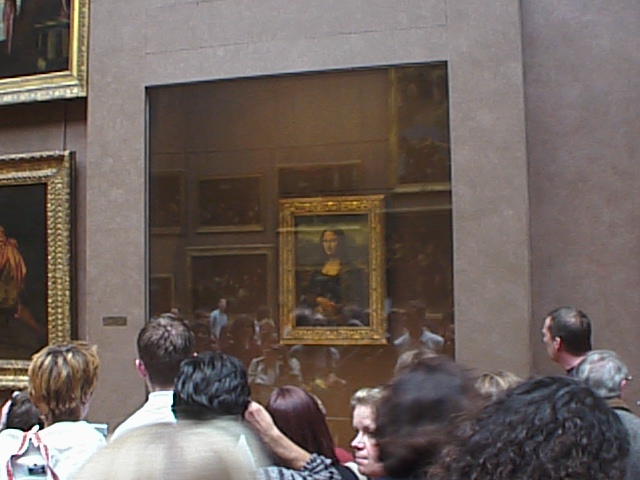 |
| You may as well look at a photograph. No, you’re better off looking at a photograph. |
Constable’s The Hay Wain is accessible without being kitschy, sentimental without being mawkish. It has been voted the second most popular painting in Britain (after Turner’s The Fighting Temeraire). Last week it was assaulted by a protester from Fathers4Justice, who stuck a picture of a child to its surface. The painting is not believed to be permanently damaged but has been removed for repair.
This comes on the heels of another
assault on a painting, by a member of the same group. The painting in question—Queen Elizabeth II’s
Diamond Jubilee portrait—is by no means in the same class as
The Hay Wain, but the damage it sustained is more serious. Tim Haries spray-painted it in an action characterized as a desperate plea for help for a father wrongly separated from his two daughters.
I’m in no way diminishing the anguish of fathers who lose custody of their children, but these two men seem to suffer from a lack of impulse control that is at cross-purposes with parenting.
There are works of art which for all practical purposes can no longer be seen in person: Michelangelo’s Pietà and da Vinci’s Mona Lisa are two famous examples. Both are behind bullet-proof glass in niches specially designed to keep viewers from any kind of contact.
 |
| Laszlo Toth being wrestled to the ground after attacking the Pietà. From a strategic standpoint, his subsequent history was instructive: he was confined for just two years. |
Both paintings have been vandalized repeatedly. However, the art vandals of an earlier age tended more toward mental illness, not activism. For example, the
Pietà was attacked by geologist Laszlo Toth, who screamed, “I am Jesus Christ!” while chipping away at the Virgin Mary with his rock hammer. (That wasn’t universally true: in 1914, militant suffragette Mary Richardson took a meat cleaver to Velázquez’s
Rokeby Venus, protesting the arrest of
Emmeline Pankhurst. Still, the nutters significantly outnumbered the activists.)
That has changed, and so have the consequences. The
Little Mermaid sat undisturbed on her perch in Copenhagen Harbor until 1964, when her head was sawed off and stolen by members of a group called
Situationist International. They’ve been consigned to the dustbin of history, but their violence toward the
Little Mermaid lives on—in subsequent beheadings, paintings, and one memorable explosion that blew her right off her perch. She has been assaulted so many times that city officials have broached the idea of moving her farther out into the harbor.
 |
| The first time the Little Mermaid was attacked, in 1964. |
And that gets to the root of the problem. Already, gallery visitors in many countries find their access to paintings more and more restricted by alarms, glass, and security guards who intervene instantly if you get too close to the work. Of course they have no choice, because our artistic heritage is the very heart of our patrimony, and its protection is their first priority. But immeasurably important things can be learned from looking at paintings up close, things that can never be understood from photographs. I’ve never seen—nor will I ever see—the
Mona Lisa or
Pietà in anything resembling “real life.” I had the awesome good fortune to have closely studied
The Hay Wain a few years ago, but I doubt I ever shall again.
Sometimes I think about art, and sometimes I paint, and sometimes I teach painting. There is only one slot open for my July workshop at Lakewatch Manor in Rockland, ME, and August and September are sold out. Join us in July or October, but please hurry! Check here for more information.



